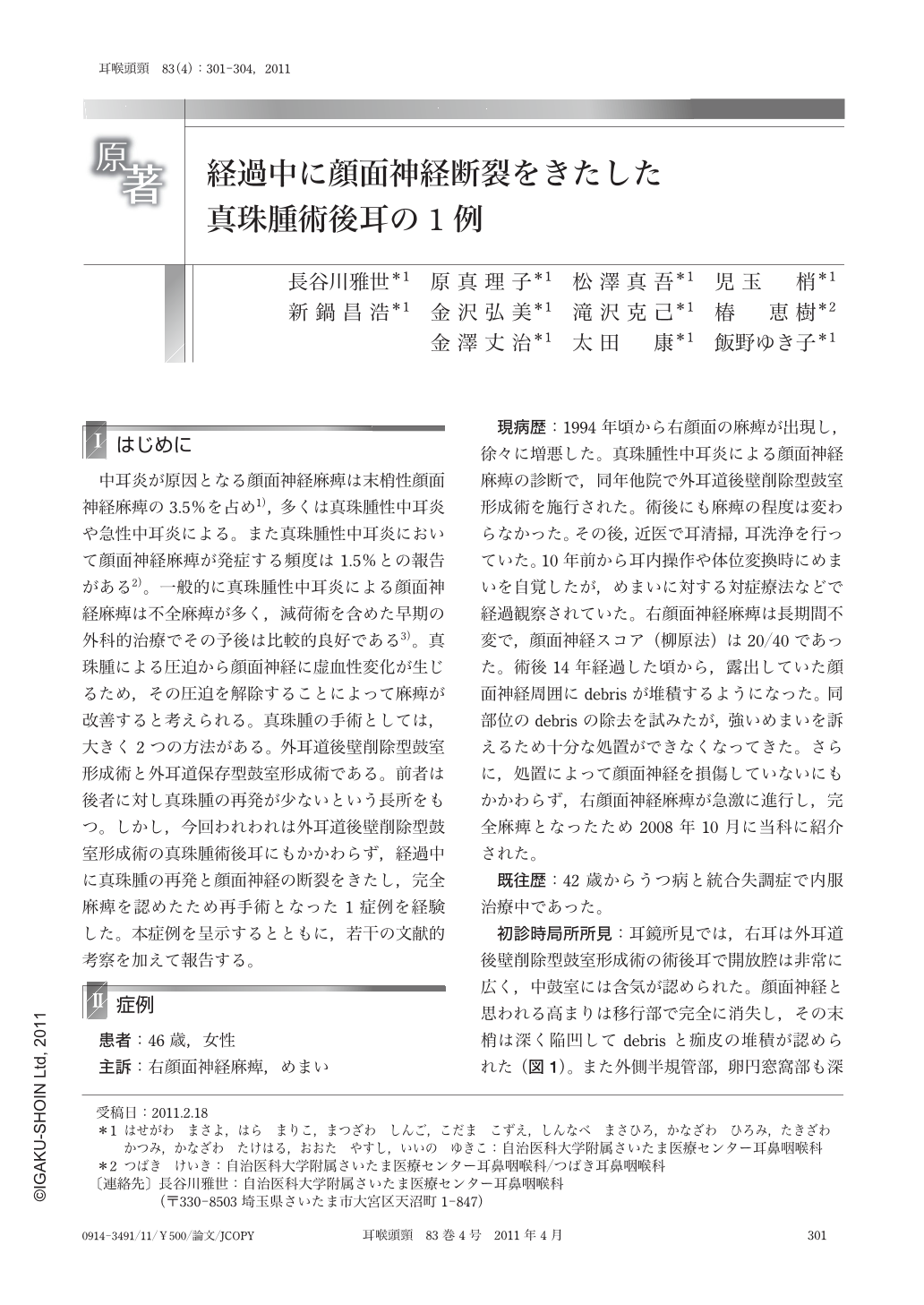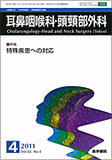Japanese
English
- 有料閲覧
- Abstract 文献概要
- 1ページ目 Look Inside
- 参考文献 Reference
Ⅰ はじめに
中耳炎が原因となる顔面神経麻痺は末しょう性顔面神経麻痺の3.5%を占め1),多くは真珠腫性中耳炎や急性中耳炎による。また真珠腫性中耳炎において顔面神経麻痺が発症する頻度は1.5%との報告がある2)。一般的に真珠腫性中耳炎による顔面神経麻痺は不全麻痺が多く,減荷術を含めた早期の外科的治療でその予後は比較的良好である3)。真珠腫による圧迫から顔面神経に虚血性変化が生じるため,その圧迫を解除することによって麻痺が改善すると考えられる。真珠腫の手術としては,大きく2つの方法がある。外耳道後壁削除型鼓室形成術と外耳道保存型鼓室形成術である。前者は後者に対し真珠腫の再発が少ないという長所をもつ。しかし,今回われわれは外耳道後壁削除型鼓室形成術の真珠腫術後耳にもかかわらず,経過中に真珠腫の再発と顔面神経の断裂をきたし,完全麻痺を認めたため再手術となった1症例を経験した。本症例を呈示するとともに,若干の文献的考察を加えて報告する。
A 46-year-old woman,who had undergone canal wall-down tympanoplasty for facial paralysis caused by cholesteatoma,was referred to our hospital because her paralysis had become worsened over the preceeding 2 months. Otomicroscopic findngs and CT images revealed complete disruption of the facial nerve at the mastoid portion and accumulation of debris and crust in the open mastoid. She underwent posterior canal reconstruction tympanoplasty combined with removal of cholesteatoma and the nerve grafting using the great auricular nerve. Facial paralysis due to cholesteatoma is not uncommon,but complete disruption of the facial nerve caused by cholesteatoma has never been reported. In this case,long-term follow-up was necessary to evaluate facial nerve function after nerve grafting.

Copyright © 2011, Igaku-Shoin Ltd. All rights reserved.


